Nuclear submarines with cruise missiles. Project 949 "Granite"
Under the new complex, a new carrier was needed, which can carry out 20 – 24 volley fire from a submerged position with missiles (according to calculations, this concentration of weapons can “penetrate” the missile defense of a promising US Navy aircraft carrier compound). In addition, the new missile carrier should have increased secrecy, speed and depth of immersion, to ensure separation from pursuit and the possibility of overcoming the enemy’s anti-submarine defense.
Preliminary work on the 3 submarine rocket carrier was launched in 1967, and in 1969, the navy issued the official TTZ for a “heavy submarine missile cruiser” equipped with an operational missile system.
The project, which received the code "Granite" and number 949, was developed at the Central Design Bureau of Marine Equipment "Rubin" under the leadership of P. Pustyntsev. In 1977, after his death, Baranov AND L. was appointed as the chief designer, and the main observer from the naval fleet - Captain of the second rank Ivanov V.N. It was assumed that when developing a new missile carrier, scientific and technical backlog, as well as individual design decisions obtained during the creation of the world's fastest project 661 submarine, will be widely used.
The Granit missile system, developed by OKB-52 (today the Mashinostroenia scientific and production association), had to meet very high requirements: the maximum range was at least 500 km, the maximum speed was at least 2500 km / h. “Granit” from previous complexes with a similar purpose was distinguished by flexible adaptive trajectories, versatility in launch (surface and underwater), as well as carriers (surface ships and submarines), salvo firing with rational spatial location of missiles, and the presence of interference-free selective control system. It was allowed to fire at targets whose coordinates have a large error, as well as with considerable time of data obsolescence. All operations for launching and daily maintenance of missiles have been automated. As a result, Granit acquired a real opportunity to solve any tasks of a sea battle with one carrier.
However, the effectiveness of long-range anti-ship missile systems was largely determined by the capabilities of target designation and reconnaissance systems. The system "Success", based on the Tu-95, did not possess the necessary combat stability. In this regard, in the early 1960-x. industry science and industry were tasked to create the world's first space-based all-weather surveillance system for surface targets throughout the world’s oceans and issuing DD with direct transfer of information to storage media weapons or ship (ground) command posts. The first government decree on the start of development work on the development of the MKRTS (Maritime Space Intelligence and Targeting) system was issued in March 1961. The largest design teams and scientific centers of the country were attracted to this large-scale work.
The head organization, which was responsible for the creation of the MKRTs, was initially identified by OKB-52, under the leadership of VN Chelomey, General Designer. The development of a unique (unparalleled in the world to the present) nuclear on-board power plant for the satellites included in the system was the responsibility of OKB-670 (scientific and production association “Red Star”) of the Ministry of Environment. But OKB-52 did not have the necessary production capacity to ensure the serial production of spacecraft for the navy. Therefore, in May, the 1969 of the year was connected to the program by the Leningrad design bureau and the Arsenal plant to them. Frunze, who became the head in the program of "sea" satellites.
The MKRTS Legend system consisted of two types of spacecraft: a satellite with a nuclear power plant and an onboard radar station, as well as a satellite with a solar power plant and a space station of radio intelligence. The Arsenal plant already in 1970 began the production of prototypes of spacecraft. In 1973, the flight tests of the spacecraft of the radar reconnaissance began, and a year later, the satellite of the radio-technical reconnaissance. The radar reconnaissance spacecraft was commissioned in 1975, and the entire complex (with the electronic reconnaissance spacecraft) - in 1978.
The space complex of electronic intelligence provides detection and direction finding of objects that emit electromagnetic signals. The spacecraft has a high-precision three-axis system of orientation and stabilization in space. The power source is a solar power plant in combination with buffer chemical batteries. The multifunctional liquid-propellant rocket launcher ensures the stabilization of the spacecraft, the correction of the height of its orbit, the issuance of a pre-acceleration pulse during the launch of the spacecraft into orbit. The mass of the device is 3300 kg, the inclination of the orbit is 65 degrees, the height of the working orbit is 420 kilometers.
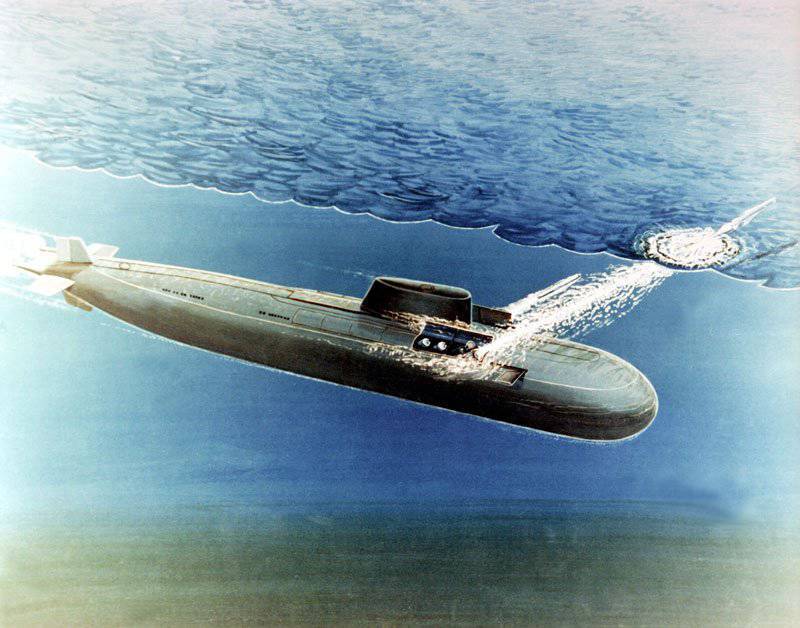
The space complex 17K114 was intended for conducting space marine reconnaissance and target designation and consisted of the spacecraft 17Ф16, equipped with a two-way side-view radar, which provided all-day and all-weather detection of surface targets. The onboard power source was the nuclear power plant, which, upon completion of the active functioning of the apparatus, is separated and transferred to a high orbit. The multifunctional liquid-propellant rocket launcher carried out the stabilization of the spacecraft, the correction of the height of its orbit, as well as the delivery of the overclocking impulse when entering the orbit. The mass of the device is 4300 kilogram, the inclination of the orbit is 65 degrees, the height of the working orbit is 280 kilometers.
In addition to the space component, the MKRTS included ship data reception points directly from the spacecraft, which ensure their processing and the issuance of the control center for the use of rocket weapons (developed by the Kvant research and production association in Kiev).
In November, the 1975 of the year began the tests of the RR P-700 RK, which received the same name "Granit" (as well as the SSGN cipher). The tests ended in August 1983. In April, 1980 of the year, even before their completion, the main submarine cruiser of the 949 project, K-525, was accepted into the Northern Fleet.
Like all previous Soviet submarines, the SSGN of the 949 project has a structurally designed two-hull architecture — an external hydrodynamic shell and an internal strong hull. The stern with plumage and two propeller shafts is similar to nuclear submarines with cruise missiles of the 661 project. The distance between the outer and inner hulls provides a significant margin of buoyancy and survivability in the event of a torpedo hit. However, for the same reason, the submarine has a huge underwater displacement - 22,5 thousand tons, of which 10 thousand tons - water.
Durable cylindrical body, made of steel AK-33, whose thickness was 45-68 millimeters. The hull was designed for a maximum immersion depth of 600 meters (working depth - 480 meters). The end bulkheads of the solid hull are spherical, cast, the aft radius is 6,5 meters, the bow radius is 8 meters. Cross bulkheads flat. The bulkheads between 1 and 2, as well as the 4 and 5 compartments, are designed for atmospheric pressure 40 and are millimeter thick 20. Thus, the submarine is divided into three shelters for emergency situations at depths up to 400 meters: in the event of flooding of a solid hull, people have a chance to escape in the first, second or third, or in the stern compartments. Other bulkheads inside the rescue zones were designed for 10 atmospheres (for depths up to 100 meters). The robust housing was divided into 9 compartments:
The first is a torpedo;
The second is control, AB;
The third is the radio room and combat posts;
Fourth - living quarters;
Fifth - auxiliary mechanisms and electrical equipment;
Sixth - reactor;
Seventh and Eighth - GTZA;
Ninth - rowing motors.
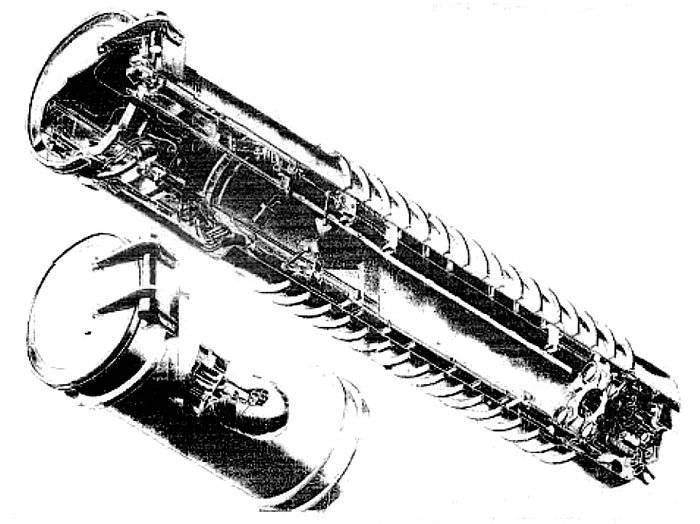
Fencing mines retractable devices shifted toward the bow of the submarine. It has a great length - 29 meters. In addition to the retractable devices, it contains a pop-up rescue chamber that can accommodate the entire crew, containers for the Igla-1 man-portable air-defense system, two VIPS devices designed for firing hydroacoustic countermeasures. The shielding of shafts of sliding devices (as well as the light hull) is equipped with ice reinforcements and a rounded roof intended for breaking ice during ascent in difficult ice conditions. Retractable nasal horizontal rudders are located in the nasal tip. Lightweight body has anti-acoustical coating.
The power plant of the ship is maximally unified with the main power plant of the SSBN of the 941 project and has a two-stage damping system and a block design. It includes two OK-650B water-cooled reactors (190 mW each) and two steam turbines (with a total power of 98 thousand hp) with the main turbo-gear unit OK-9, which work through speed reduction gears by two propeller shaft. The steam turbine plant is located in two different compartments. There are also two turbo generators (3200 kW each) and two backup diesel generators DG-190 (800 kW each), as well as a pair of thrusters.
The main power installation due to dvuhvalnosti has one hundred percent reservation. The main turbo-gear unit, the steam-generating unit, electric motors, autonomous turbine generators as well as the shaft line and the propeller of one side are duplicated by the second side. In this regard, the failure of a single element or the entire mechanical installation of one side of a submarine does not lose its combat capabilities.
The main armament of the SSGN 949 of the project includes 24 anti-ship missiles "Granit" in twin PU. Containers with rockets are placed outside the robust hull with a constant angle of elevation - 40 degrees. The targeting of anti-ship missiles was provided from satellites of the space reconnaissance and targeting system 17K114. The submarine was equipped with a buoy-type pop-up antenna - “Catfish”, which allows you to receive radio messages, satellite navigation signals and target designation, being under the ice and at great depths. The antenna is located behind the felling fence in the superstructure.
The 3M45 rocket of the Granit complex, which has a nuclear (500 Kt) or high-explosive warhead (750 kg), is equipped with a cruise missile propulsion CR-93 with a solid-propellant ring rocket accelerator. The maximum range of fire from 550 to 600 kilometers, maximum speed at high altitude corresponds to M = 2,5, at low altitude - M = 1,5. Starting weight is 7 thousand kilograms, case diameter is 0,88 meters, length is 19,5 meters, wingspan is 2,6 meters.
Missiles can be fired not only singly, but also in a salvo (up to 24 anti-ship missiles, launching at a very high rate). With a salvo fire between the missiles, an automatic distribution of targets is performed. A salvo provides the creation of a dense grouping of missiles, making it easier to overcome the enemy's anti-missile defense. Organization of flight of all missiles in a salvo, additional search for an order and “covering” with the included radar sighting rocket flying above the rest, allows the rest of the salvo anti-ship missiles to fly in radio silence on the marching sector. During the flight of missiles, the optimal distribution of targets between them within the order occurs. Complex flight trajectory and supersonic speed, high noise immunity of radio electronic equipment, as well as the presence of a special retraction system aviation and enemy anti-aircraft missiles provide Granita when fired in full salvo, a high probability of overcoming the anti-missile and air defense systems of an aircraft carrier (it is believed that nine hits by Granit missiles are required to sink a US Navy strike aircraft carrier). To increase the survivability of the missile warhead against means of short-range destruction, it was made armored.
Torpedo-missile automated complex "Leningrad-949" allows you to use torpedoes, as well as rocket-torpedoes "Wind" and "Waterfall" at all depths of the dive. The complex includes two 650-mm and four 533-mm torpedo tubes equipped with a fast-loading device with transverse and longitudinal feed racks placed in the bow of the submarine, and the Grind torpedo fire control devices. The fast-loading device allows you to use the entire ammunition torpedoes for a few minutes. The ammunition includes 24 torpedoes (650-millimeter anti-ship missiles 65-76А, 533-millimeter universal USET-80), Shkval missiles and anti-submarine missiles (84-Р and 83-Р). Torpedoes can be fired from depths up to 480 meters at speeds from 13 nodes (65-76А) to 18 nodes (USET-80).
The basis of the radioelectronic armament of a nuclear submarine with cruise missiles of the 949 project is the Ouibus MVD-132 IMS, the consoles of which were located in the second compartment in the GKP. Boat equipped HOOK CIM-540 «Ramp-3», consisting of determinant fractures NOR-1, a mine-detector station MG-519 «Harp" station-alarm transponder MGS-30, the navigation detector circular NOC-1, MG-512 «Screw" , echoledomera MG-543, MG-518 "North". All of these tools make it possible in the automated mode to find, bearing and track various targets (up to 30 targets simultaneously) in narrow and broadband direction finding modes in the infrasound, sound and high frequency ranges. There is a low-frequency towed receiving antenna, which is produced from the upper tube on the aft stabilizer and hydrophones placed along the sides of the light hull. GAK operates at a distance - up to 220 kilometers. The main mode is passive, however there is the possibility of automated detection, measurement of the course angle and the distance to the target by the echo signal (in active mode). A demagnetizer is installed along the light housing.
The Medveditsa automated navigation system consists of a direction finder, anchor-based navigation system for hydroacoustic responder beacons, the ADK-ZM space system, the GCU-1M gyrocompass, the KM-145-ПХNUMX magnetic compass, inertial systems, lag and other devices closed on the digital computing system complex "String". All means of communication are combined in the Molniya-M complex. Intelligence data from airplanes can or spacecraft can be received on the "Catfish" buoy antenna in a submerged position. The received information after processing is entered into the ship combat information management system Omnibus. Also on the submarine there is a television-optical complex MTK-2, which allows to conduct visual observation from a submerged position from the depths of 110 ... 50 meters.
For the members of the crew of a nuclear submarine with cruise missiles of the 949 project, optimal conditions were created for autonomous navigation of a long duration (autonomy is estimated to be 120 days). The personnel were provided with individual permanent berths in 1-, 2-, 4- and 6-cabin cabins. The living compartments were equipped with a broadcasting network. The submarine has a canteen and a saloon for the simultaneous eating of forty-two sailors, for baking bread and cooking - a galley consisting of cooking and preparation departments. The reserve of provisions, designed for complete autonomy, was located in the storerooms and provision chambers (including freezers). The submarines also have a gym, solarium, swimming pool, living area, sauna, and so on.
In all modes, when the main power installation is in operation, the air conditioning and ventilation system provides the room with standard air values for humidity, temperature and chemical composition. The system of chemical regeneration provides in the compartments of the submarine during the entire voyage in the autonomous mode the content of carbon dioxide and oxygen within the established norms. The air cleaning system eliminates the content of harmful impurities.
Emergency rescue means developed for the submarines of the 949-th project are superior to those of submarines of previous projects. The design reserve of buoyancy is more than 30 percent, which provides surface navigation and unsinkability in the event of full flooding of any compartment of a solid hull, as well as two adjacent tanks adjacent to the flooded compartment of the main ballast of one side. The reserves of VVD, provided by the project, provide the ability to blow the ballast in an amount necessary to compensate for the negative buoyancy in case of flooding any compartment with damage to two tanks of the main ballast at a depth of less than 150 meters. The blowing time of all tanks from the periscope depth is less than 90 seconds. For emergency blowing used powder gas generators. The hydraulics system operates from a pair of overlapping steering and ship hydraulics pumping stations located in the ninth and third compartments. In the event of a total de-energization of the submarine, they have the reserve of energy necessary for the three crossings of the bow of the horizontal and stern rudders. Submersible dewatering facilities ensure the removal of water not only in the surface position, but also at all depths including the maximum, with the total pumping at the maximum depth - more than 90 cubic meters per hour.
The submarine is divided by length into two rescue zones: from the 1-th to the 4-th compartment and from the 5-th to 9-th compartment. In the nasal zone is a pop-up camera accommodating the entire crew from the maximum depth (in the fence of the sliding devices). The stern zone is equipped with an individual rescue system - by exiting the emergency hatch in diving equipment. Luke is located in the ninth compartment. All zones are separated by inter-sectional bulkheads, the main purpose of which is to ensure the unsinkability of the vessel.
The autonomous buoy of complex B-600, rising from depths to 1 thousand meters, provides automatic data transmission over a distance of 3 thousand kilometers during 5 days about a submarine accident and its coordinates at the moment of separation from the buoy boat. The rescue hatch of the ninth compartment makes it possible to use the rescue equipment of the submariner (it was adopted in 1980 year). The hatch is equipped with a manual or semi-automatic controlled sluice system that provides submariners to exit from depths to 220 meters, as well as sluice upon exiting via buipress from depths to 100 meters without flooding the 9 compartment. Placing the coaming platform over the 9 compartment ensures the landing of a deep-sea rescue vehicle or rescue bell, which is lowered along the guide cable.
In the USSR Navy, the boats of the 949 project were assigned to nuclear missile submarines of the first rank. In the west, they received the designation Oscar class.
According to the estimates of domestic experts, the SSGN of the 949 project by the criterion of "efficiency / cost" is the most preferred means against enemy aircraft carriers. The cost of one submarine of the 949-A project, as of the middle of 80, was 226 million rubles, which at face value was only 10 percent of the cost of the Roosevelt multi-purpose aircraft carrier (2,3 billion dollars without taking into account the cost of the aircraft wing). At the same time, according to experts from industry and the navy, one submarine nuclear-powered vessel was able, with a high probability, to destroy a number of escort ships and an aircraft carrier. But other quite authoritative experts questioned these estimates, considering that the relative effectiveness of these submarines was greatly overestimated. In addition, the problem of identification and target designation for any long-range weapons and especially missile weapons has always been the “Achilles heel”. For effective defeat of mobile targets, such as ships, it was necessary to get target designation just before the shooting itself, that is, in real time. Such target designation for nuclear submarines with cruise missiles on the AUG can in principle be obtained from reconnaissance aircraft (Uspekh-U) and the spacecraft (MKRTS Legenda). However, the spacecraft is very vulnerable - even before the start of a combat operation, it can be shot down, suppressed, and reconnaissance aviation will have to extract data in the domination zone of the aircraft of a potential enemy, leading battles with it, and it will be unrealistic to get information from a surface vessel . It is also necessary to take into account the fact that the aircraft carrier is a universal fighting means capable of solving a wide range of tasks, while the submarine was a ship of a narrower specialization. And if not to compare with the US Navy aircraft carriers, then two submarines of the 949 project cost (even in the Soviet Union, where mass production of nuclear submarines went) more expensive than, for example, the 11435 “Admiral of the Soviet Kuznetsov Fleet” heavy aircraft carrier.
Modifications
On the SSGN of the 949 project, starting from the second building, a towed antenna of the hydroacoustic system was placed on the upper vertical stabilizer in the tubular fairing.
Construction program
The construction of the SSGN of the 949 project was carried out from the 1978 year in Severodvinsk at the Northern Machine-Building Enterprise (CVD No. 402). Built 2 corps - K-525 ("Arkhangelsk") was introduced into the 02.10 fleet. 1981 and K-206 (“Murmansk”) was introduced into 20.12. 1983. Further construction was carried out on an improved project 949-A. Originally it was planned to build a minimum of 20 nuclear-powered submarines with cruise missiles, but the collapse of the Soviet Union and the economic crisis effectively crossed out this program.
Status on 2007 year
Currently, both nuclear-powered 949-th project are taken to the reserve.
The main tactical and technical characteristics of SSGN project 949:
Surface displacement - 12500 tons;
Underwater displacement - 22500 tons;
Main dimensions:
The greatest length - 144 m;
The greatest width - 18,2 m;
Draft on KVL - 9,2 m;
Main power plant:
- 2 water-cooled reactor OK-650B, total power 380 mW;
- 2 PPU;
- 2 GTZA OK-9
- 2 steam turbines, total power 98000 hp (72000 kW);
- 2 turbogenerator, power of each 3200 kW;
- 2 diesel generator DG-190, power 800 kW;
- 2 shaft;
- 2 thrusters;
- 2 seven rotor propellers;
Surface speed - 15 nodes;
Submerged travel speed - node 30 ... 32;
Immersion depth - 480 ... 500 m;
Extreme depth of immersion - 600 m;
Autonomy - 120 days;
Crew - 94 people (including officer 42);
Impact rocket armament:
- SM-225 launchers of sea-based anti-ship missile systems П-700 "Granit" - 12 X 2;
- 3М45 anti-ship missiles (SS-N-19 "Shipwreck") - 24;
Anti-aircraft weapons:
Launchers of the portable 9K310 Igla-1 / 9K38 Igla (SA-14 Gremlin / SA-16 Gimlet) anti-aircraft missile system - 2 (16)
Torpedo armament:
650 mm torpedo tubes - 2 nasal;
650 mm torpedoes 65-76А - 6;
533 mm torpedo tubes - 4 nasal;
USET-533 - 80 18-mm torpedoes;
Anti-submarine guided missiles 83-P "Waterfall" / 84-P "Wind"; Squall missiles - instead of part of torpedoes;
Mine armament:
- can carry mines instead of torpedoes;
Electronic weapons:
Combat information and control system - Omnibus-949;
General detection radar system - MRKP-58 "Radian" (Snoop Head / Pair);
Hydroacoustic complex MGK-540 "Skat-3":
- NOR-1;
- MG-519 "Harp";
- MGS-30;
- NOK-1;
- MG-512 "Screw";
- MG-518 "North";
- MG-543;
- BGAS on the second building;
Means of electronic warfare:
"Anis", "Zone" (Bald Head / Rim Hat, Park Lamp) 2 X VIPS to launch GPA;
Navigation complex:
- "Synthesis" space navigation;
- "Dipper-949";
- GKU-1M gyrocompass;
- ADK-ZM "Sail" space navigation;
Means of targeting SCRK:
- “Selena” (Punch Bowl) AP kosmich. Coral systems;
- МРСЦ-2 АP of the aviation system "Success";
Radio communication complex:
- “Bark” of the PMU;
- "Lightning-M" (Pert Spring);
- "Catfish" buoy antenna;
Radar system of state recognition: "Nichrom-M".
Project 949-A "Antey" • Oscar-II class
After the first two ships built on the 949 project, the construction of submarine cruisers began on the improved project 949А (code “Antey”). As a result of the modernization, the boat received an additional compartment, which made it possible to improve the internal layout of weapons and on-board equipment. As a result, the ship’s displacement increased slightly, while at the same time it was possible to reduce the level of the unmasking fields and install improved equipment.
According to a number of domestic experts, by the criterion of “cost-effectiveness”, SSGNs of the 949 project are the most preferred means of dealing with enemy aircraft carriers. As of the middle of 80, the cost of one boat, the 949A, was 226 million rubles, which at par was only 10% of the cost of the Roosevelt multipurpose aircraft carrier (2,3 billion dollars, excluding the cost of its aviation wing). At the same time, according to the calculations of experts of the Navy and industry, one submarine nuclear-powered vessel could with a high probability damage the aircraft carrier and a number of its escort ships. However, other quite authoritative experts questioned these estimates, believing that the relative effectiveness of the SSGNC was overestimated. It was necessary to take into account the fact that the aircraft carrier was a universal fighting means capable of solving an extremely wide range of tasks, while submarines were ships of much narrower specialization.
Currently, the boats of the project 949 withdrawn. At the same time, the grouping of submarines of the 949А project is, in addition to the Tu-22М-3, sea-launched missile and long-range aircraft, in fact the only means capable of effectively resisting US attack aircraft carrier formations. Along with this, combat units of the grouping can successfully act against ships of all classes during conflicts of any intensity.
The robust hull of a two-hull submarine, made of steel, is divided into 10 compartments.
The power plant of the ship has a block design and includes two OK-650B water-type reactors (190 mW) and two steam turbines (98.000 hp) from the OKZA-9 GTS, operating on two propeller shafts through gearboxes that reduce the rotation speed of the propellers . The steam turbine plant is located in two different compartments. There are two turbo generators for 3200 kW each, two diesel generators DG-190, two thrusters.
The boat is equipped with the MKK-540 “Skat-3” hydroacoustic complex, as well as with a radio communication system, command and control, space reconnaissance and target designation. Reception of reconnaissance data from spacecraft or aircraft is carried out in a submerged position on special antennas. After processing, the information received is entered into the ship's CICS. The ship is equipped with an automated, having increased accuracy, increased radius of action and a large amount of information processed by the navigation system “Symphony-U”.
The main armament of the missile cruiser is the 24 supersonic cruise missile of the P-700 “Granit” complex.
On the sides of the wheelhouse, which has a relatively large length, outside the robust hull are located 24 paired airborne rocket container, inclined at an angle 40 °. The ZM-45 rocket, equipped both with nuclear (500 KT) and high-explosive warheads with a mass of 750 kg, is equipped with a cruise propulsion jet engine KR-93 with a solid-fuel rocket accelerator. The maximum firing range of 550 km, the maximum speed corresponds to M = 2,5 at high altitude and M = 1,5 - at low. The launch mass of the rocket is 7000 kg, length is 19,5 m, body diameter is 0,88 m, wingspan is 2,6м. Missiles can be fired either singly or in salvo (up to 24 RCCs, launched at a high pace). In the latter case, target allocation is carried out in a volley. The creation of a dense grouping of missiles is provided, which facilitates the overcoming of the enemy's missile defense systems. The organization of the flight of all the volley missiles, the additional search of the order and the “covering” of its included radar target allows the anti-ship missiles to fly on the cruise station in radio silence mode. In the course of the flight of the missiles, an optimal distribution of targets within the warrant between them is carried out (an algorithm for solving this problem was developed by the Institute of Armaments of the Navy and the NGO Granit). Supersonic speed and complex flight trajectory, high noise immunity of electronic equipment and the presence of a special system of removal of the enemy’s anti-aircraft and aircraft missiles provide Granit with a full volley of relatively high probability of overcoming air defense systems and missile defense systems.
Automated torpedo-missile complex of a submarine allows the use of torpedoes, as well as the torpedoes “Waterfall” and “Wind” at all depths of the dive. It includes four 533-mm and four 650-mm torpedo tubes located in the forward part of the hull.
The Granit complex, created in 80's, was already obsolete by the year of 2000. First of all, it refers to the maximum firing range and missile immunity. The element base underlying the complex has also become obsolete. At the same time, the development of a fundamentally new operational anti-ship missile system is currently not feasible for economic reasons. The only real way to maintain the combat potential of domestic "anti-aircraft" forces is obviously the creation of a modernized version of the Granit complex to be placed on the 949A SSGN during their scheduled maintenance and modernization. It is estimated that the combat effectiveness of the upgraded missile system, which is currently under development, should increase by approximately three times compared to RK Granit, which is in service. The rearmament of submarines is supposed to be carried out directly at the bases, and the time and cost of implementing the program should be minimized. As a result, the existing grouping of submarines of the 949А project will be able to function effectively until the 2020s. Its potential will further expand as a result of equipping ships with the “Granit” version of the spacecraft capable of hitting ground targets with high accuracy with non-nuclear equipment.
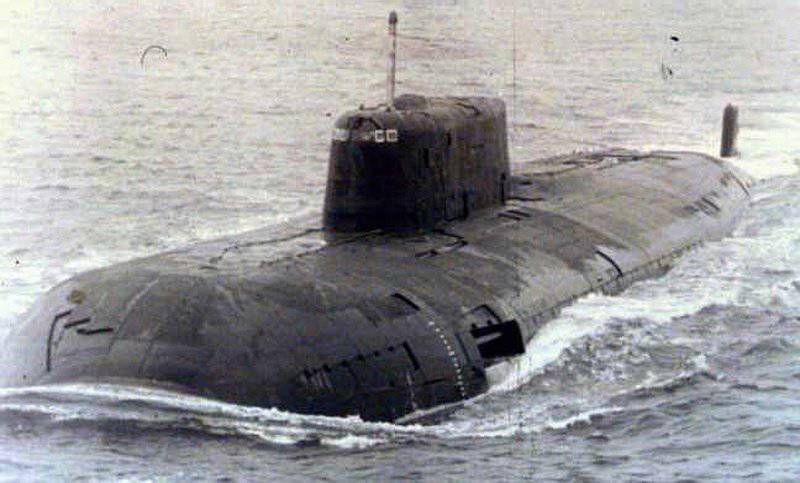
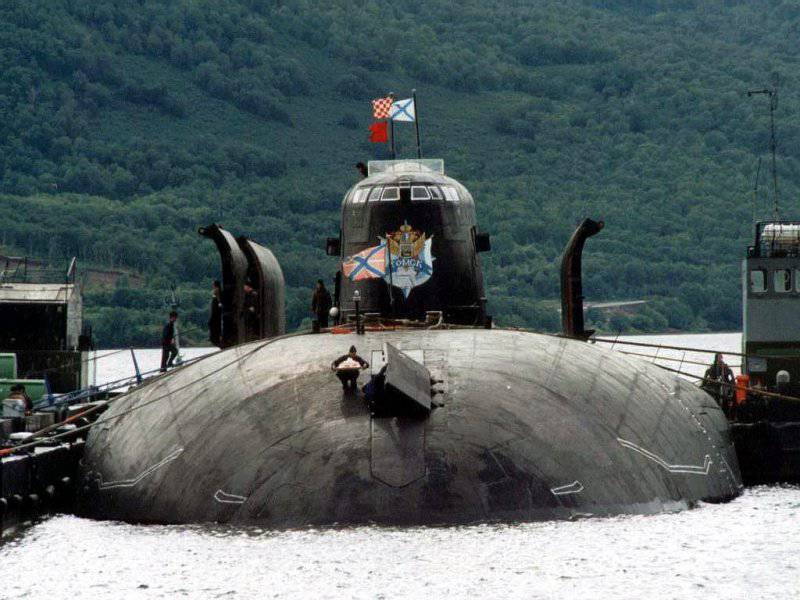
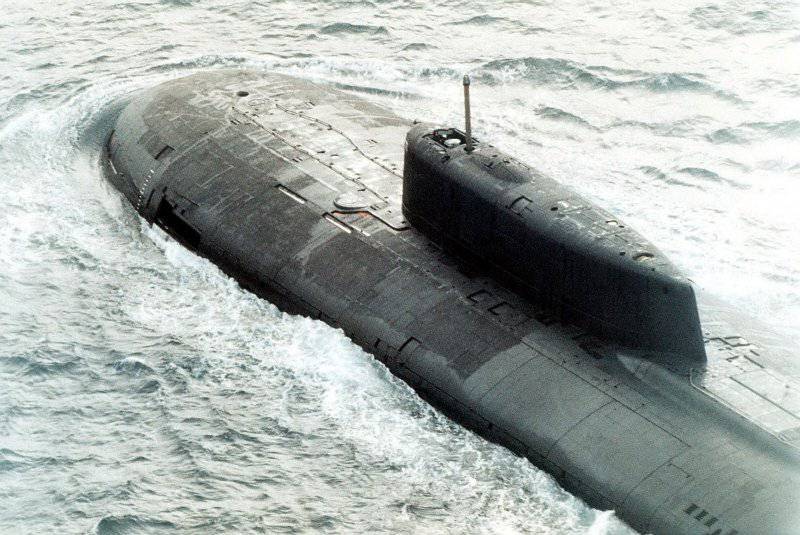
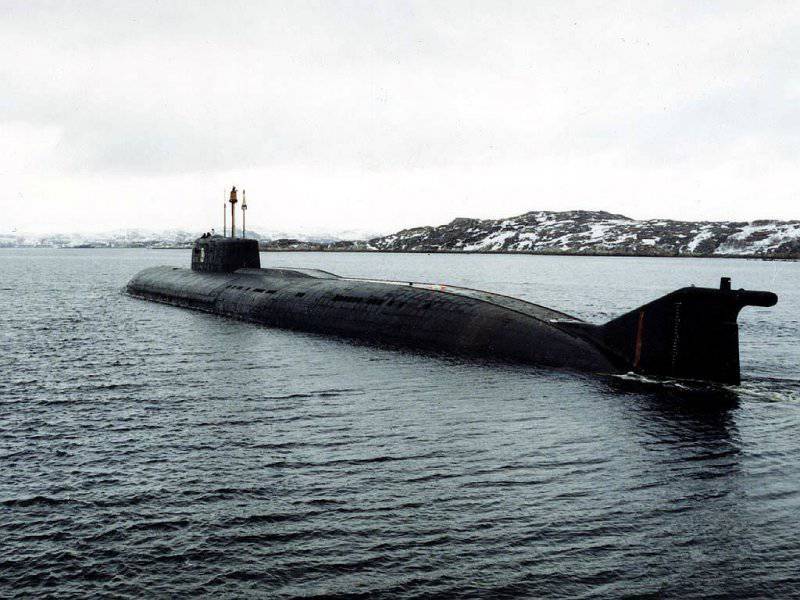
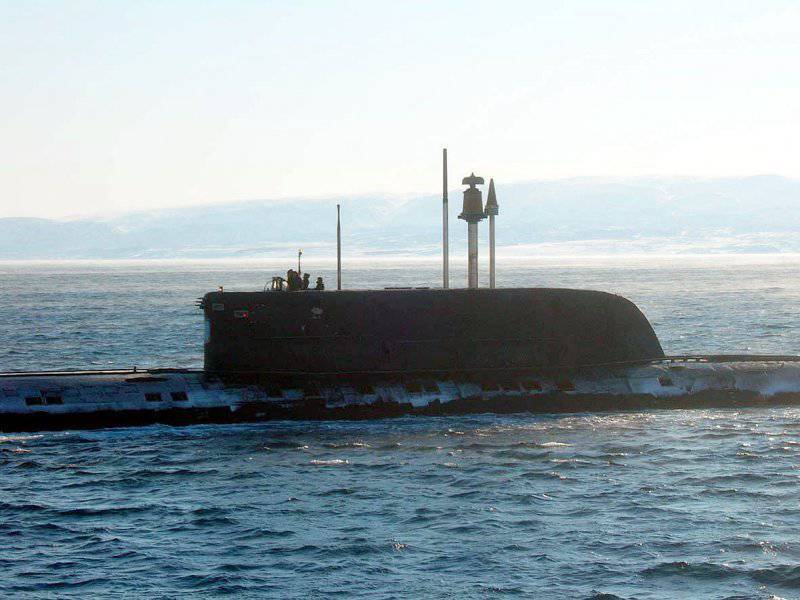
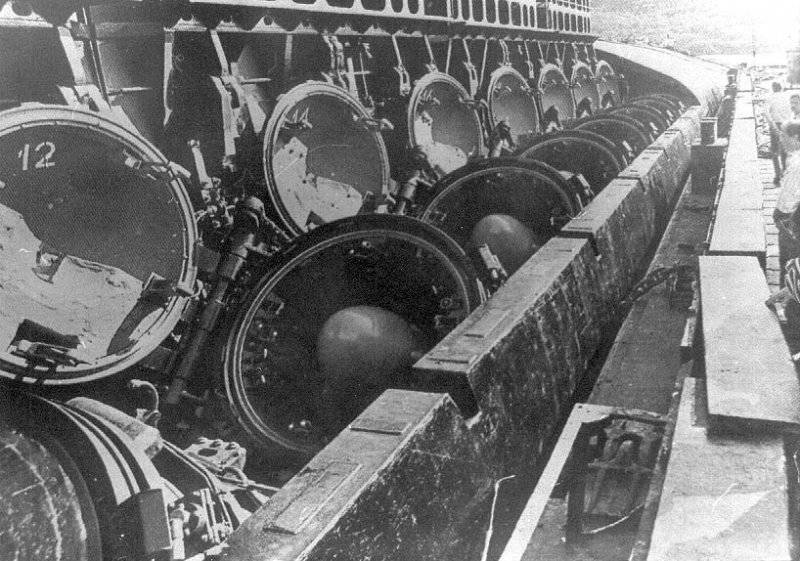
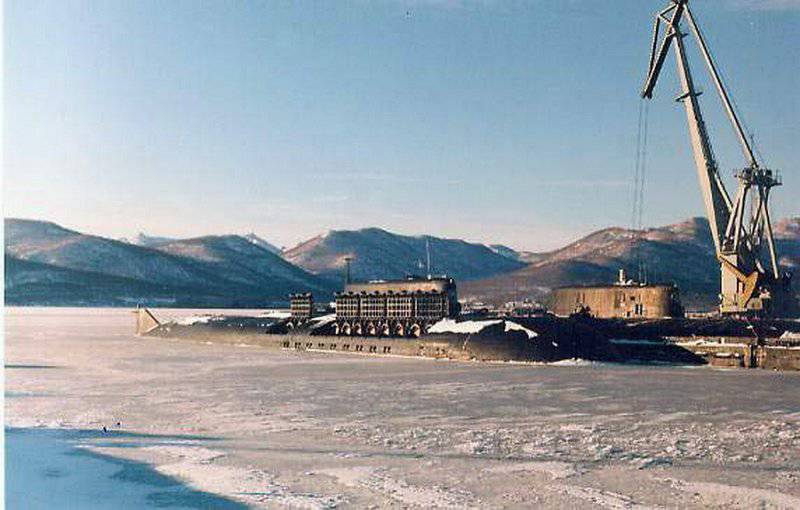
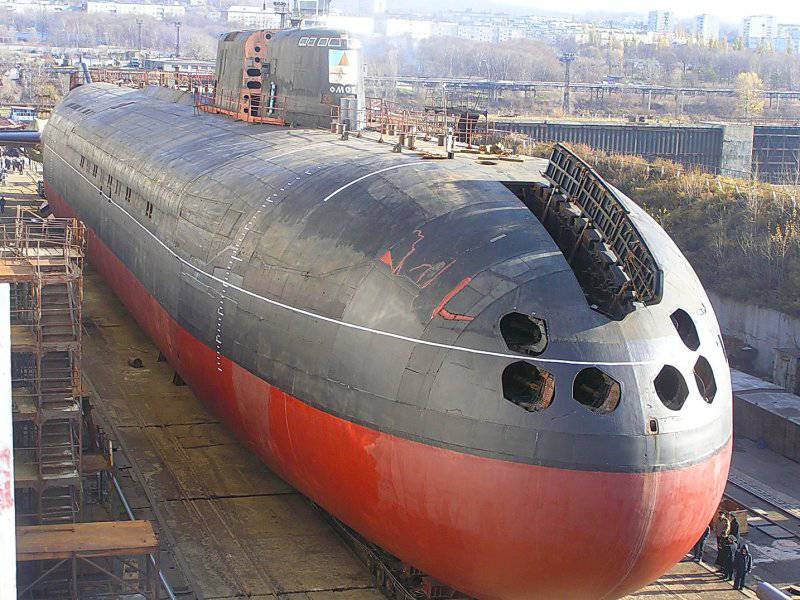
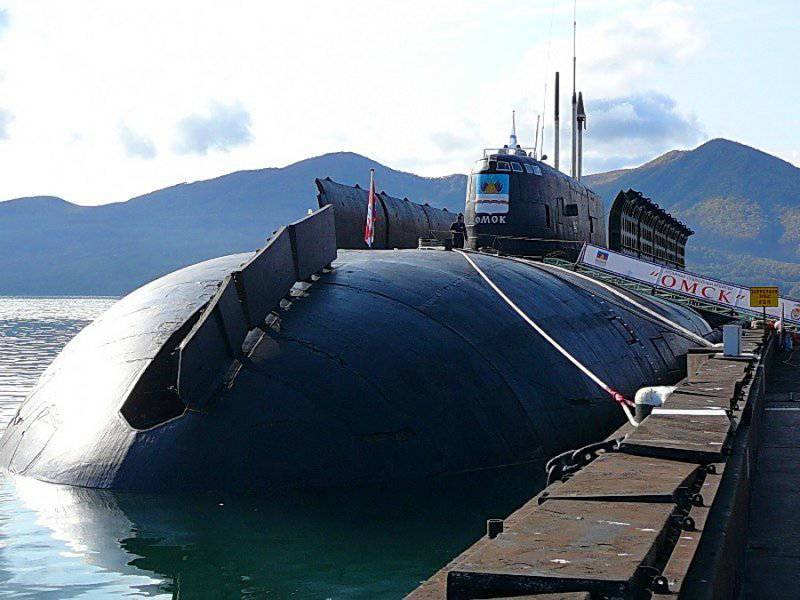
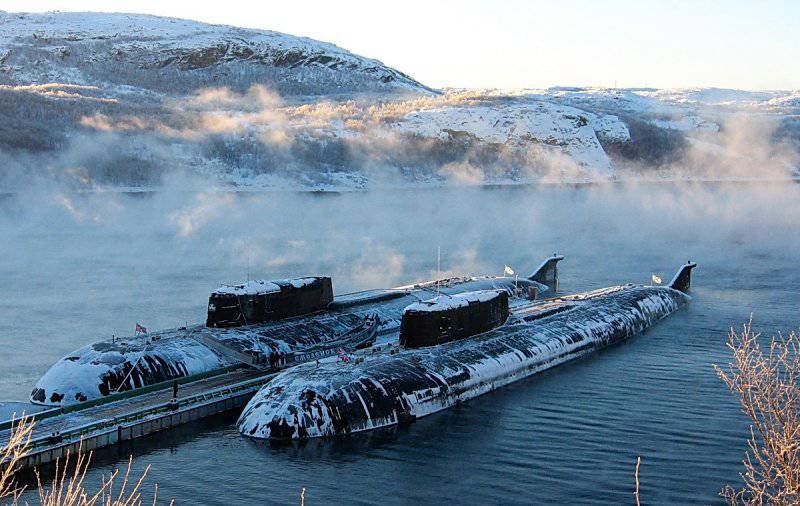
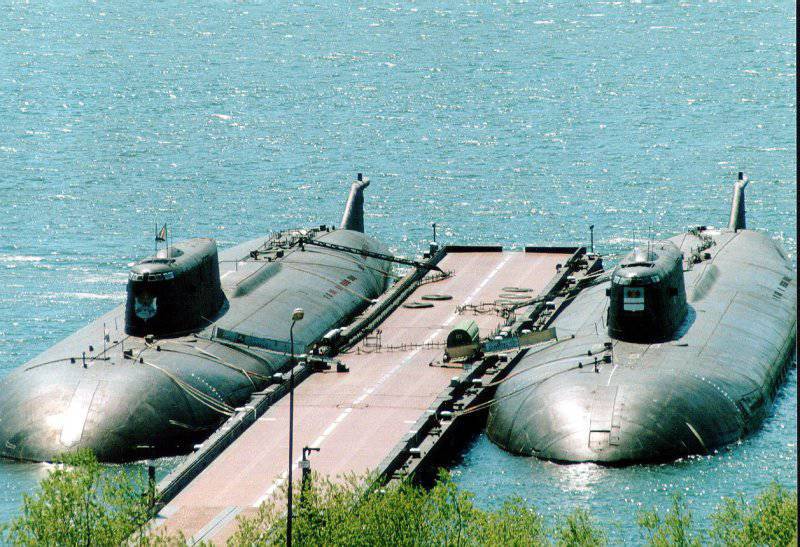
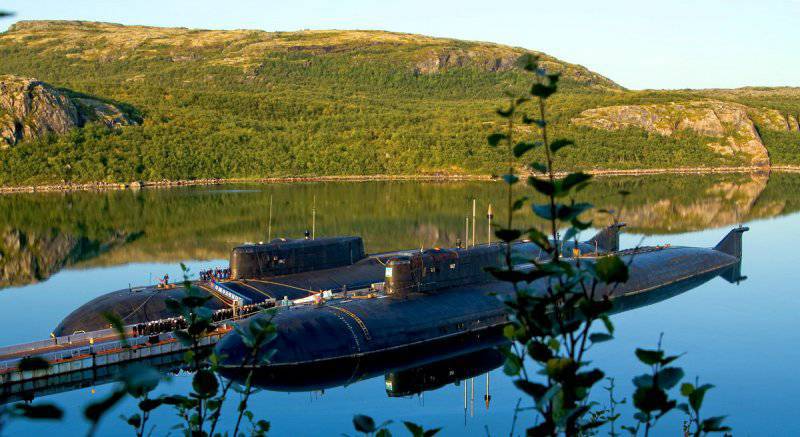
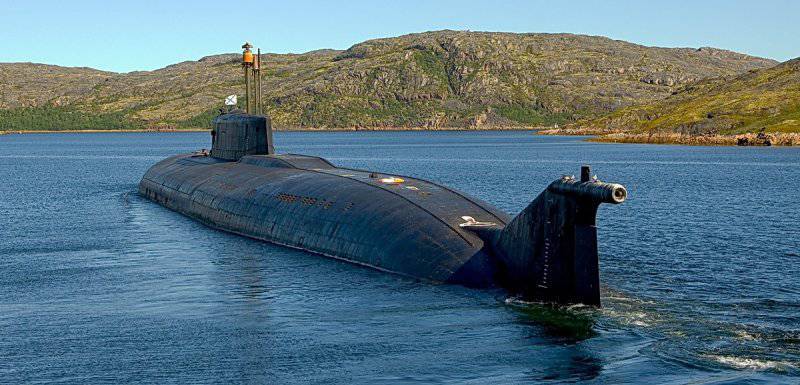
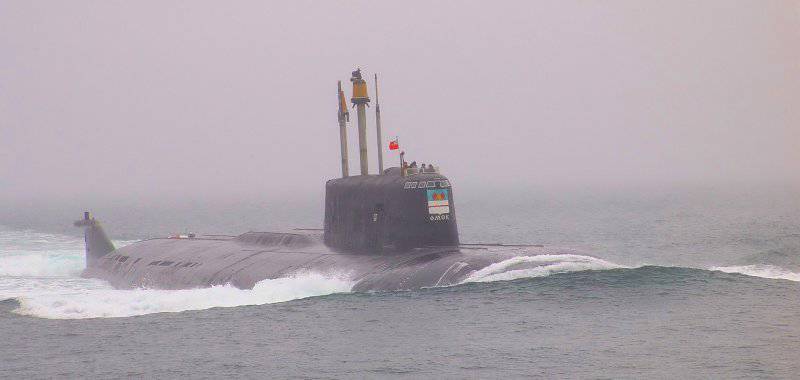
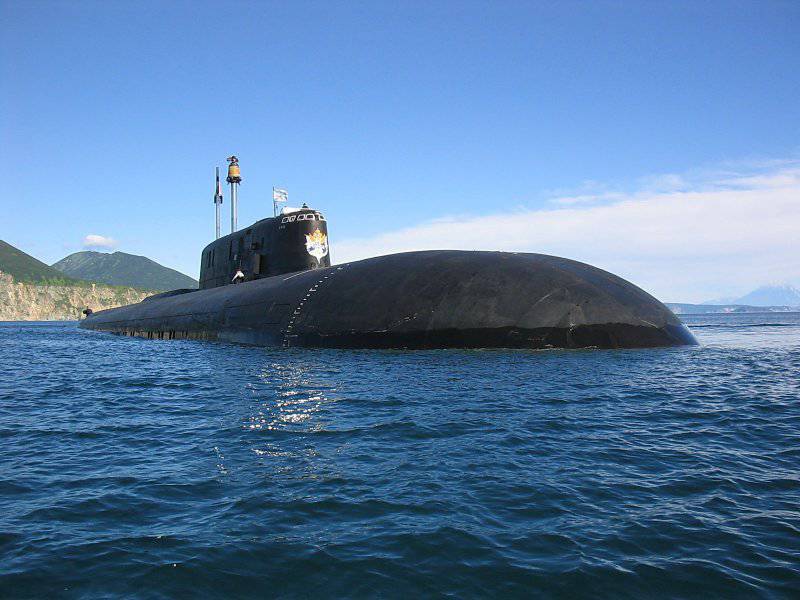
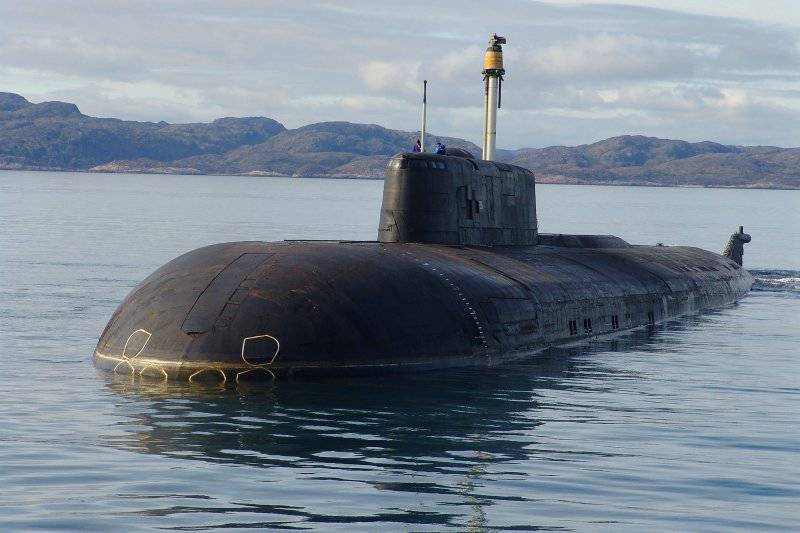
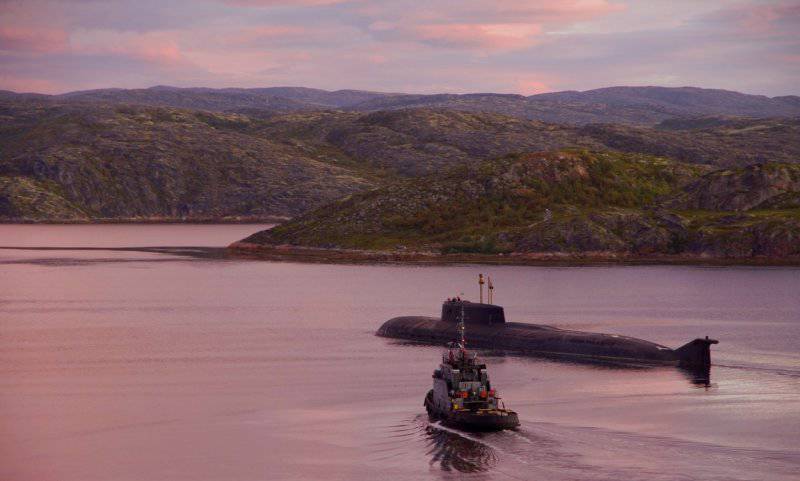
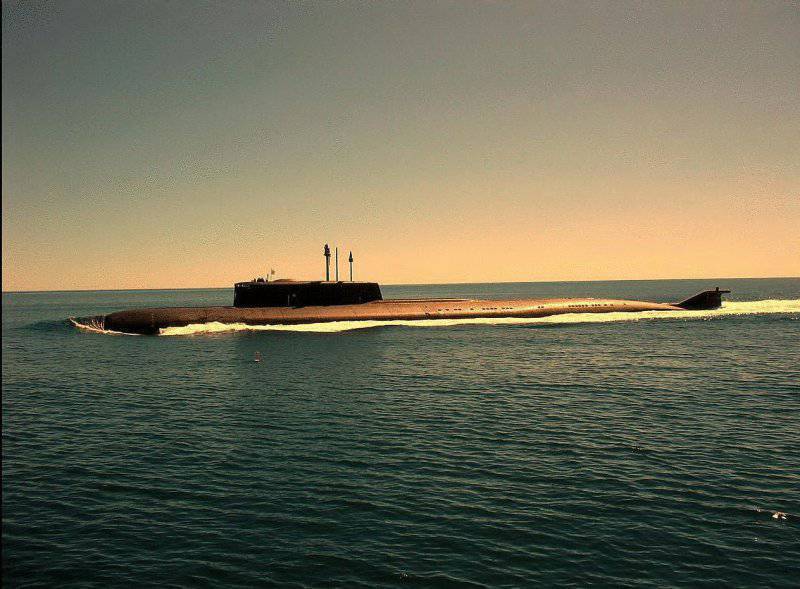
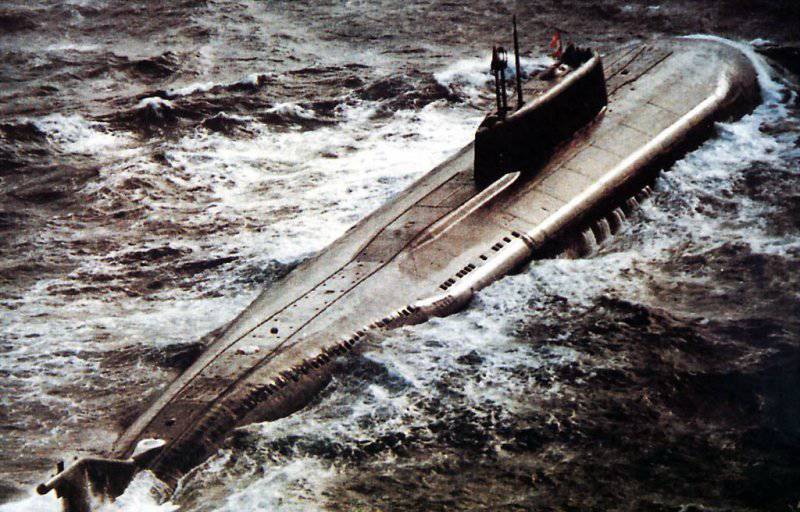
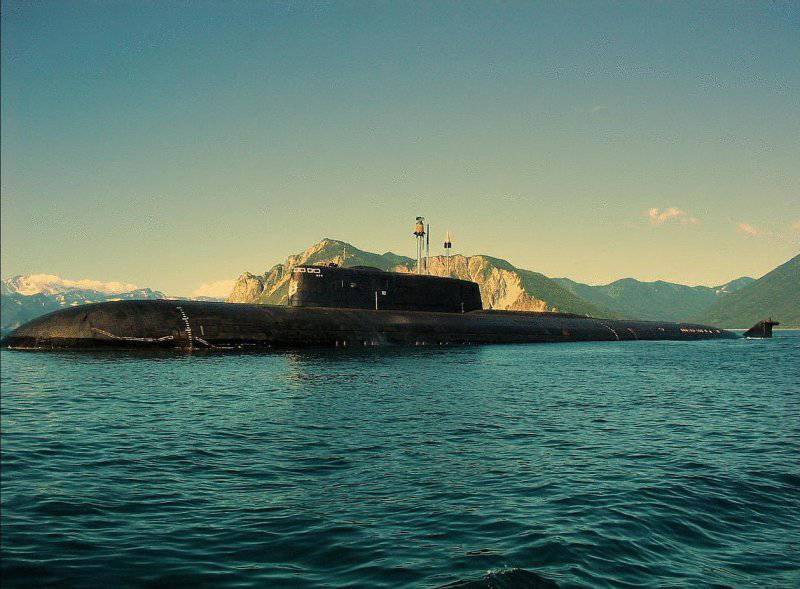
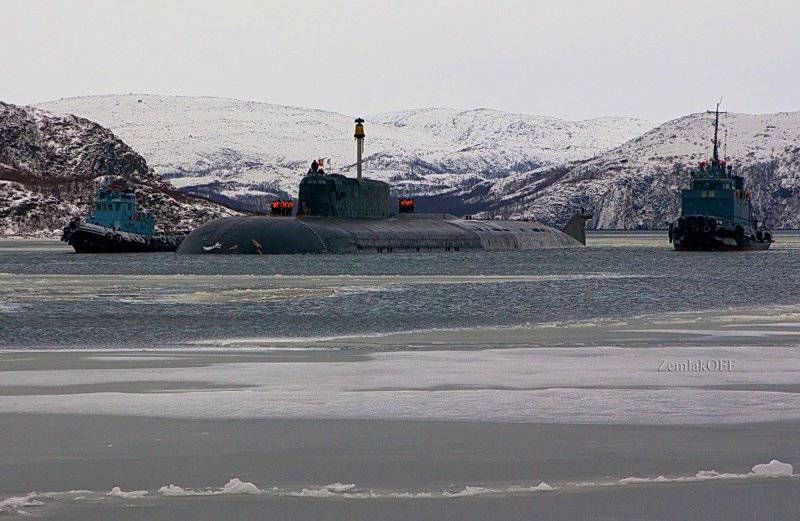
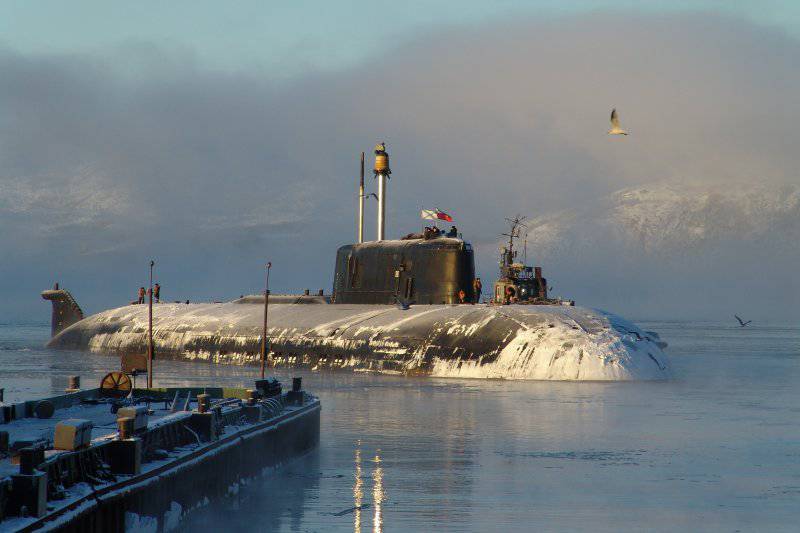
Information